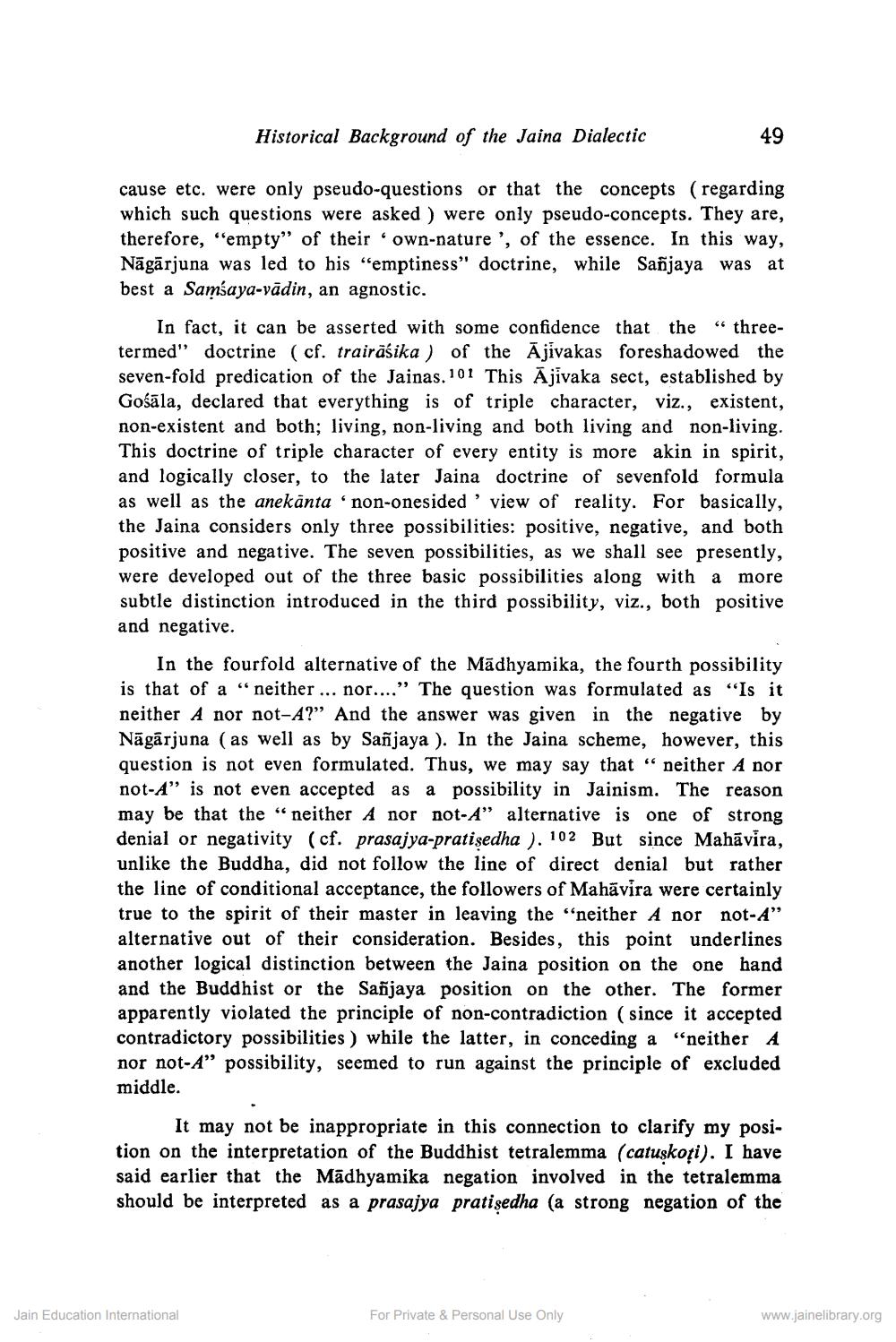________________
Historical Background of the Jaina Dialectic
49
cause etc. were only pseudo-questions or that the concepts (regarding which such questions were asked ) were only pseudo-concepts. They are, therefore, "empty" of their own-nature', of the essence. In this way, Nāgārjuna was led to his "emptiness" doctrine, while Sanjaya was at best a Samsaya-vādin, an agnostic.
In fact, it can be asserted with some confidence that the “ threetermed" doctrine (cf. trairāśika) of the Ājivakas foreshadowed the seven-fold predication of the Jainas. 101 This Ājivaka sect, established by Gośāla, declared that everything is of triple character, viz., existent, non-existent and both; living, non-living and both living and non-living. This doctrine of triple character of every entity is more akin in spirit, and logically closer, to the later Jaina doctrine of sevenfold formula as well as the anekānta 'non-onesided' view of reality. For basically, the Jaina considers only three possibilities: positive, negative, and both positive and negative. The seven possibilities, as we shall see presently, were developed out of the three basic possibilities along with a more subtle distinction introduced in the third possibility, viz., both positive and negative.
In the fourfold alternative of the Mādhyamika, the fourth possibility is that of a “neither ... nor...." The question was formulated as "Is it neither A nor not-A?" And the answer was given in the negative by Nāgarjuna (as well as by Sanjaya ). In the Jaina scheme, however, this question is not even formulated. Thus, we may say that “neither A nor not-A" is not even accepted as a possibility in Jainism. The reason may be that the “neither A nor not-A" alternative is one of strong denial or negativity (cf. prasajya-pratisedha ). 102 But since Mahāvira, unlike the Buddha, did not follow the line of direct denial but rather the line of conditional acceptance, the followers of Mahāvira were certainly true to the spirit of their master in leaving the neither A nor not-A" alternative out of their consideration. Besides, this point underlines another logical distinction between the Jaina position on the one hand and the Buddhist or the Sañjaya position on the other. The former apparently violated the principle of non-contradiction (since it accepted contradictory possibilities ) while the latter, in conceding a "neither A nor not-A” possibility, seemed to run against the principle of excluded middle.
It may not be inappropriate in this connection to clarify my position on the interpretation of the Buddhist tetralemma (catuskoti). I have said earlier that the Mādhyamika negation involved in the tetralemma should be interpreted as a prasajya pratisedha (a strong negation of the
Jain Education International
For Private & Personal Use Only
www.jainelibrary.org




